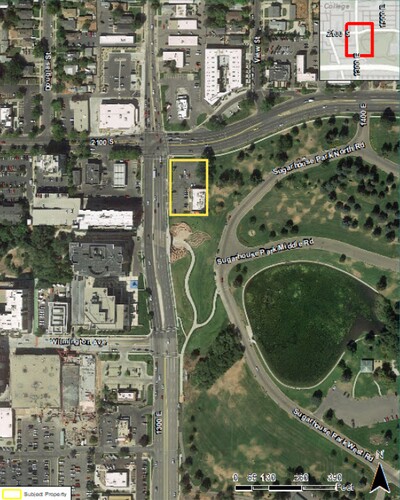An appeals officer has rejected Kum & Go’s challenge of a decision in April barring it from building a gas station next to Sugar House Park.
Released Wednesday, the new ruling leaves in place a 9-1 vote by Salt Lake City’s planning commission to deny the Iowa-based chain’s request for a conditional use permit for the site at 2111 S. 1300 East, based on concerns over traffic and environmental impacts on the park, air quality and on secondary water supplies in nearby Parleys Creek.
Representatives for Kum & Go have 30 days to challenge the latest decision — if it chooses to do so — in 3rd District Court.
In a seven-page ruling, Mary Woodhead, hearing officer on land use appeals, said that while some of the commission’s findings “were debatable based on the record,” its rejection of the permit was backed by evidence that traffic to and from the gas station would be detrimental to surrounding neighborhoods and could not be mitigated.
City planners also had urged the conditional use be turned away due to the site’s proximity to secondary water sources at risk from potential fuel leaks or runoff that might taint water supplies. Woodhead did not address those arguments and centered her ruling affirming the commission’s take on traffic flows.

(Salt Lake City Planning Division) A location map for a new Kum & Go convenience store and fueling station proposed at the busy Sugar House corner of 2100 South and 1300 East in Salt Lake City.
Attorneys for Kum & Go, which has since been purchased by the Utah-based Maverik chain of convenience stores, had argued that the commission’s April 12 vote was illegal, arbitrary and capricious — and should be overturned.
Public sentiment at a series of hearings tilted sharply against the two-story convenience store and fueling station near the park’s northwest corner, where a long-vacated Sizzler restaurant stands. Hundreds submitted written comments and extensive testimony in opposition.
Woodhead wrote that Kum & Go was correct that the commission could not base its decision on “public clamor” under Utah law, but she noted at least seven instances when public testimony offered “firsthand knowledge” of existing traffic snarls at that busy intersection near Interstate 80.
“Here,” she wrote, “close residents and users of the 1300 East and 2100 South provided factual information about their experience with the streets to be used for access to the project.”
Planning commissioners, she said, were within their scope “to consider that a gas station off a freeway exit would bring additional traffic to an already difficult intersection and that, given the purpose of the use, mitigation in the form of fewer cars is not possible.”
(Galloway & Company) A rendition of a new Kum & Go convenience store and fueling station, proposed for the corner of 2100 South and 1300 East in Salt Lake City, as seen from Sugar House Park. An appeals officer on Wednesday upheld a decision by the city's planning commission to reject the proposal, based on traffic concerns.
While Chris Hogle, a Salt Lake City-based attorney representing Kum & Go, had argued as part of an appeals hearing in June that only official traffic data and analysis should be used as “relevant evidence” in the case, that interpretation, Woodhead said, “would make public comment irrelevant except when offered by experts.”
The commission’s conclusion based on potential additional car trips generated by the new store “is not illegal, arbitrary or capricious,” Woodhead wrote, “and is supported by evidence in the record.”








